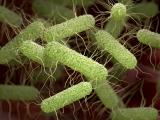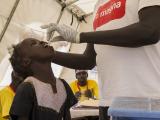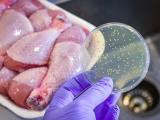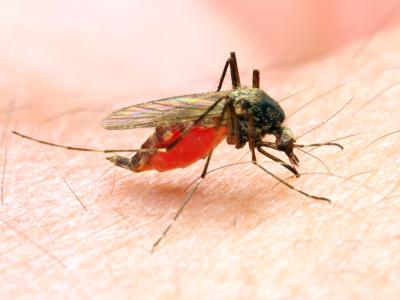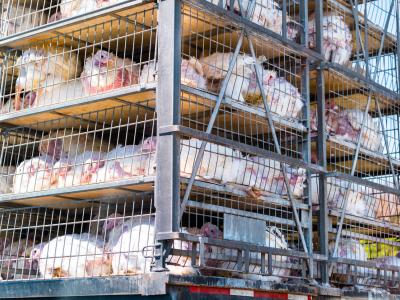Jun 4, 2008 (CIDRAP News) Tomatoes are the likely culprit in 57 recent cases of Salmonella infection in New Mexico and Texas, and another 29 cases in seven other states may be part of the same outbreak, according to federal health officials.
On the basis of "preliminary data," the FDA yesterday warned consumers in Texas and New Mexico to avoid raw red plum, red Roma, and round red tomatoes because of the possible contamination. The agency said cherry, grape, and home-grown tomatoes, plus those sold with the vine attached, should be safe.
The illnesses involve Salmonella enterica serotype Saintpaul, an unusual strain, the FDA and the Centers for Disease Control and Prevention (CDC) reported.
The strain was identified in 57 cases from New Mexico and Texas between Apr 23 and Jun 1, the FDA said. Seventeen patients were hospitalized. The cases include 33 in New Mexico and 24 in Texas, the CDC said in an update today.
In addition, authorities are investigating 29 recent Salmonella Saintpaul cases in Arizona, Colorado, Idaho, Illinois, Indiana, Kansas, and Utah to determine if they are linked to tomatoes, the CDC said. States with the most cases are Illinois (12) and Arizona (6).
In a news release today, the New Mexico Department of Health (NMDH) said 40 people from 10 New Mexico counties have had recent Salmonella Saintpaul infections, up from 31 cases identified as of May 31. Several people were hospitalized, but none have died, the statement said.
Raw tomatoes emerged as the likely source of the outbreak in a case-control investigation by the New Mexico and Texas health departments and the Indian Health Service, the CDC reported. Investigators are working to pinpoint the source of the contaminated tomatoes.
"FDA recognizes that the source of the contaminated tomatoes may be limited to a single grower or packer or tomatoes from a specific geographic area," the FDA stated. Because many tomato crops in and outside the United States will soon be ready for harvest, investigators hope to find the source quickly, the agency said.
The advice to avoid raw Roma or red round tomatoes is currently only for consumers in Texas and New Mexico. The CDC added several additional tips for consumers in general:
- Don't buy bruised or damaged tomatoes, and discard any that look spoiled.
- Thoroughly wash all tomatoes under running water.
- Refrigerate cut, peeled, or cooked tomatoes within 2 hours, or discard them.
- Keep tomatoes that will be eaten raw separate from raw meats, raw seafood, and other raw produce.
- Wash cutting boards, dishes, utensils and counters with hot water and soap when switching between food products.
Tomato-related salmonellosis outbreaks are not rare, though the pathogen is more typically associated with poultry and eggs. In September 2007 the CDC estimated that a dozen salmonellosis outbreaks linked to raw tomatoes since 1990 had involved more than 79,000 cases. The agency said four outbreaks associated with restaurant tomatoes in 2005 and 2006 involved 459 confirmed cases in 21 states.
A year ago the FDA announced its Tomato Safety Initiative, an effort to determine how tomatoes are contaminated by Salmonella and other pathogens and to develop better guidance for prevention. The project is a cooperative effort by the FDA, state agencies in Virginia and Florida, several universities, and members of the produce industry.
See also:
CDC statement on Samonella Saintpaul investigation
http://www.cdc.gov/salmonella/saintpaul/
Jun 3 FDA warning about potential contamination in tomatoes
http://www.fda.gov/bbs/topics/NEWS/2008/NEW01843.html
Jun 4 statement from the New Mexico Department of Health
Jun 3 statement from the Texas Department of State Health Services
http://www.dshs.state.tx.us/news/releases/20080603.shtm
Sep 6, 2007, CIDRAP News story "CDC warns of Salmonella risk from tomatoes"
Jun 19, 2007, CIDRAP News story "FDA to hunt for causes of tomato contamination"
